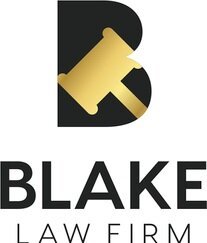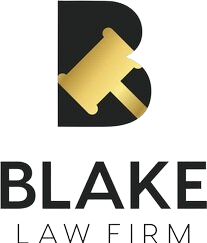Evicting a commercial tenant in California
This article provides a general overview of the process for evicting a commercial tenant in California. The eviction process involves removing the tenant or occupant from the property and is taken when the tenant has violated the terms of the lease agreement, failed to pay rent, or engaged or failed to engage in other acts that are breaches of the lease and warrant termination of the tenancy. In commercial evictions, the terms of the lease generally control the process, but if the landlord is required to file an unlawful detainer (“eviction”) lawsuit, then there are additional rules that apply. The general process is as follows:
1. Review Lease Agreement:
Begin by reviewing the lease agreement to understand the rights and obligations of the parties with respect to the breach at issue. Ensure that the tenant’s default is material and provides legal grounds for eviction. Some breaches may not be considered material giving rise to an eviction. It is crucial to follow any specified procedures outlined in the lease regarding notifying the tenant in regard to any breach.
2. Notice to Quit:
Provide the tenant with a written notice to quit, which informs them of the specific lease violations and the required corrective actions. The notice period varies depending on the nature of the violation and the terms of the lease. Generally, if the default is unpaid rent the notice period is 3 days. However, it is important to review the default provisions in a commercial lease since often times they will provide the tenant with more time to cure, e.g. 5, 10 or 30 days.
3. Unlawful Detainer Lawsuit:
If the tenant fails to comply with the notice to quit, the next step is to file an unlawful detainer lawsuit in the appropriate California court, which is the County where the property is located. This legal action is initiated to regain possession of the property and potentially to get damages for unpaid rent or other costs. In California, unlawful detainer actions are limited to back rent owed, meaning if there are still 3 years left on the lease, the landlord cannot get damages for the additional 3 years of rent in the unlawful detainer court. A separate civil action would need to be filed to pursue those damages. It is important to include in the unlawful detainer lawsuit as defendants any person or entity that claims to be in possession of the premises, e.g. subtenants.
4. Serve Summons and Complaint:
After the lawsuit is filed, the landlord is required to serve the tenant with the summons and complaint, officially notifying them of the lawsuit. This step must be done according to California law, which may involve using a registered process server. The proof of service must be filed with the court.
5. Tenant Response:
After receiving the summons and complaint, the tenant has five days to file a response with the court, excluding weekends and holidays. If they do not respond or contest the eviction, the landlord can apply to the court for a default judgment, which expedites the process. In some cases, a tenant will voluntarily vacate after being served with an unlawful detainer lawsuit, rather than incur the additional expense of contesting the lawsuit. In the event that happens, it is good practice to execute a lease termination agreement with the tenant to confirm, among other things, that possession is being returned and a date certain for the tenant to vacate.
6. Court Hearing:
If the tenant contests the eviction and files a response with the court, the landlord, tenant or both can request a trial date, which the court will then schedule. Since unlawful detainer cases are expedited proceedings and take precedence over other civil matters
the court generally sets the trial within 20 days of the request to set trial. At trial, both parties will present their case via relevant documents and witness testimony, and the judge will make a determination based on the evidence provided. A typical unlawful detainer trial is 30 minutes to a few hours, depending on the nature of the default and the evidence needed to support it. An unlawful detainer trial is usually handled by a Judge, however, either party may request a jury trial. Also, either side can appeal the unlawful detainer judgment if desired.
7. Writ of Possession:
If the court enters judgment in the landlord’s favor, the next step to regain possession of the premises is for the landlord to obtain a writ of possession from the court. This is an order signed by the court allowing law enforcement to physically remove the tenant from
the property if they refuse to vacate voluntarily.
8. Enforcement of Writ:
The writ of possession must be served on the tenant by a levying officer, which is usually the sheriff’s office, who oversees the eviction process, ensuring it is carried out legally and peacefully. The sheriff will serve a notice to vacate on the tenant providing them with 5 days to vacate the premises. In the event the tenant does not vacate the premises in the 5 days, the sheriff will return to forcibly remove the tenant and/or any occupants from the premises. This timing of this step is contingent upon the sheriff’s diligence in serving the notice,
which can often times take several weeks. Once the tenant is out, the landlord will have legally regained possession of the premises and the eviction process is complete.
9. Recovery of Unpaid Rent:
In the event that the landlord was also awarded damages as part of the unlawful detainer judgment the landlord may pursue legal efforts to collect on the judgment by levying on the tenant’s property, wage garnishment, etc.
10. Compliance with Tenant's Rights:
Throughout the eviction process, it's crucial to comply with all tenant rights outlined in the commercial lease agreement and California law. Failure to do so may result in legal complications, delay the proceedings and/or additional liability. It's important to note that California has specific laws governing commercial tenant evictions, and these may differ from residential eviction laws. Consulting with a qualified attorney is strongly advised to navigate the legal complexities and ensure compliance with the law. If you have specific questions about commercial tenant eviction in California, please do not hesitate to contact our firm.



